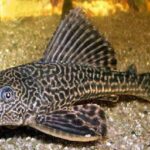The emergence of fideleturf in the landscaping and sports industries marks a significant advancement in sustainable turf solutions. As environmental concerns heighten, traditional turf methods face scrutiny for their water consumption and reliance on chemicals. Fideleturf offers an innovative approach that combines aesthetic appeal with ecological responsibility. This blog post will explore the various dimensions of fideleturf, highlighting its origins, benefits, and future prospects.
The Origins of Fideleturf
Understanding the roots of fideleturf provides insight into its relevance in today’s market. The concept was developed by a team of environmental scientists and turf specialists who recognized the need for a sustainable alternative to traditional grass. Conventional lawns often require significant irrigation and chemical treatments, leading to resource depletion and environmental harm. Fideleturf was designed to address these issues, using advanced materials that not only mimic the appearance of natural grass but also promote sustainability.
Key Benefits of Fideleturf
One of the primary advantages of fideleturf is its durability. Unlike traditional grass, which can suffer from wear and tear, especially in high-traffic areas, fideleturf is engineered to withstand extensive use. This makes it ideal for parks, playgrounds, and sports fields where durability is essential. Additionally, fideleturf significantly reduces the need for maintenance. Homeowners and facility managers can enjoy beautiful green spaces without the constant need for mowing, watering, and fertilizing.
Fideleturf for Residential Use
When considering options for residential landscaping, fideleturf stands out as a practical solution. Its realistic look provides homeowners with the lush, green aesthetic that is often sought after in outdoor spaces. Fideleturf allows homeowners to create inviting gardens, lawns, and recreational areas without the extensive upkeep required by traditional grass. This makes it especially appealing for busy families or individuals who want to enjoy their outdoor spaces without the added work.
Fideleturf in Sports Applications
The use of fideleturf in sports fields has gained traction among various athletic organizations. Sports facilities are adopting fideleturf for its ability to provide a consistent and safe playing surface. Its advanced design allows for excellent drainage, reducing the risk of injuries associated with uneven ground. Athletes benefit from improved performance and safety, making fideleturf a preferred choice for schools, colleges, and professional sports teams alike.
Environmental Impact of Fideleturf
Choosing fideleturf has significant environmental benefits. Traditional grass lawns often require extensive water usage, leading to waste, particularly in drought-prone areas. Fideleturf, however, is designed to thrive with minimal water, making it a sustainable choice for landscaping. Additionally, it eliminates the need for harmful pesticides and fertilizers, which can contaminate soil and water sources. By opting for fideleturf, individuals and organizations can contribute to environmental conservation efforts while enjoying beautiful outdoor spaces.
Installation Process of Fideleturf
Understanding the installation process of fideleturf is crucial for anyone considering this option. While professional installation is recommended, having a grasp of the steps involved can be beneficial. The first step is site preparation, which includes grading and leveling the ground to create a solid base. Next, the fideleturf rolls are laid out in sections, ensuring that seams are aligned for a seamless appearance. Proper installation is key to maximizing the longevity and performance of fideleturf, so it’s important to follow guidelines carefully.
Maintenance Requirements for Fideleturf
One of the most appealing aspects of fideleturf is its low maintenance requirements. After installation, maintaining fideleturf is simple. Regular brushing helps keep the fibers upright and looking fresh, while occasional cleaning can remove debris and dirt. Unlike natural grass, fideleturf does not need to be mowed, fertilized, or extensively watered, making it an ideal choice for busy homeowners and organizations. This ease of maintenance allows property owners to enjoy their outdoor spaces without the time-consuming tasks typically associated with traditional lawns.
The Economic Benefits of Fideleturf
Investing in fideleturf can yield significant economic benefits over time. While the initial cost may be higher than traditional grass, the long-term savings can be considerable. Reduced water usage translates to lower utility bills, and minimal maintenance means less time and money spent on upkeep. For sports facilities, the durability of fideleturf results in fewer repairs and replacements, leading to additional savings. By choosing fideleturf, property owners can enjoy beautiful landscapes while keeping their financial commitments in check.
The Future of Fideleturf
As we look to the future, the potential for fideleturf is vast. With ongoing advancements in technology and materials, the quality and functionality of fideleturf are expected to improve further. Increased consumer awareness regarding sustainability will likely drive demand for eco-friendly products, placing fideleturf in a prime position within the market. As more individuals and organizations prioritize environmentally responsible options, fideleturf is set to play a crucial role in shaping the future of landscaping and sports turf management.
Conclusion
Fideleturf is revolutionizing the turf industry by combining innovation with sustainability. Its origins reflect a growing awareness of environmental challenges, and its benefits extend across various sectors, from residential lawns to professional sports fields. By choosing fideleturf, individuals and organizations can enhance their outdoor spaces while contributing to a healthier planet. As we move towards a more sustainable future, fideleturf stands out as a premier choice for those looking to create beautiful, resilient, and eco-friendly landscapes.








